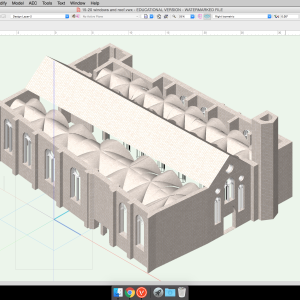The Quinze-Vingts
Anna Dzwoniarek, Aera Isabelle Papaganas, Daniela Ruano Orantes, and Yi Zhang
The Quinze-Vingts, founded by King Louis IX, is the oldest hospital for the blind in the world. The original complex was constructed between 1260 and 1325, and was dedicated to Saint Remi, known for curing a blind hermit. The blind were held in high esteem in medieval Paris, granted special privileges as official beggars by St. Louis and seen as pious and blessed. The hospital’s original complex, located on the Rue St.-Honore, included a gatehouse, a meeting room, rooms for residents, a cemetery, a bell tower, and a small church. The church became a minor pilgrimage site due to St. Louis’s frequent visits and the indulgences granted there. Despite its importance, the church was relatively modest, with no rich monastery or patron supporting the construction financially. The Quinze-Vingts was simply decorated but uniquely constructed in the shape of an irregular trapezoid abbutting the street. in 1779 during the reign of Louis XVI, the Qunize-Vingts was moved to the 12e arrondissement and the original complex was destroyed to make way for the expansion of the Louvre.
Selected Bibliography
Dubois, A. The Quinze-Vingts in Paris: The Oldest Institute for the Blind in the World, Historia Ophthalmologica Internationalis 1, (1979): 119-127.
Cohen, Meredith. “Louis’ Later Patronage in Paris,” Chapter 5. In The Sainte-Chapelle and the Construction of Sacral Monarchy: Royal Architecture in Thirteenth-Century Paris, Cambridge University Press, 2014
Polking O’Tool, Mark. “Caring for the Blind in Medieval Paris: Life at the Quinze Vingts, 1250-1430.” Phd diss., University of California Santa Barbara, 2007.









